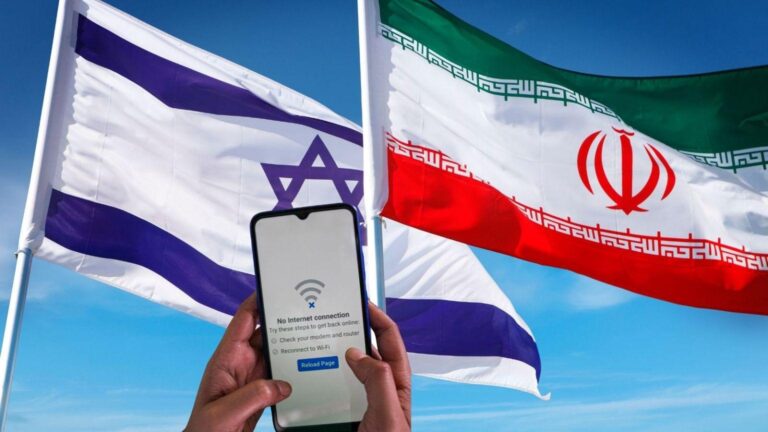Tensions within the American political landscape are escalating as the ongoing conflict involving Iran ignites fierce divisions among supporters of the Make America Great Again (MAGA) movement. Once perceived as a unified front, MAGA factions are now fracturing over differing responses to the Iran crisis, revealing a brewing internal conflict that threatens to reshape the movement’s future. This article explores how the Iran conflict is acting as a catalyst for a civil war within MAGA ranks, highlighting the implications for the broader political arena in the United States.
Rising Tensions Within MAGA Circles Over Iran Policy Deepening Political Divides
The steadfast unity once seen within MAGA circles is now fracturing, as factions clash over the Trump-era administration’s hardline stance toward Iran. While some hardliners push for intensified sanctions and military posturing, others argue for a more pragmatic approach that includes diplomatic engagement to avoid further destabilization in the Middle East. This growing rift is exposing deep ideological divides, with heated debates unfolding not only on social media platforms but also within influential conservative forums and think tanks. The once cohesive narrative championing American strength abroad is now clouded by dissent, shaking the movement’s political foundations.
Key points fueling the discord include:
- Supporters of aggressive policy: Advocates for maximum pressure argue Iran must be confronted decisively to prevent nuclear escalation.
- Doves within MAGA: Some call for measured sanctions relief tied to verifiable commitments, emphasizing economic impact and global stability.
- Influence on upcoming primaries: Candidates’ Iran positions are increasingly scrutinized, signaling potential reshaping of GOP foreign policy agendas.
| Faction | Primary Stance | Potential Impact |
|---|---|---|
| Hardliners | Maximum pressure, no negotiations | Escalation risk, party hardening |
| Moderates | Conditional diplomacy | Opportunity for de-escalation |
| Libertarian-leaning | Noninterventionist | Foreign policy rethinking |
Analyzing the Impact of the Iran Conflict on Republican Party Unity and Voter Base
The escalating conflict with Iran has sharply divided the Republican Party, exposing deep rifts within the MAGA faction. Traditional GOP leaders emphasize a cautious approach, wary of entangling the U.S. in another prolonged Middle East conflict. In contrast, hardline supporters aligned with former President Trump advocate for aggressive action, viewing any sign of restraint as weakness. This ideological schism is not only fracturing party leadership but also igniting fierce debates among grassroots supporters, threatening to undermine party cohesion ahead of the next election cycle.
Key factors contributing to the internal discord include:
- Disagreement over U.S. military involvement and foreign policy strategy
- Clashing narratives between party moderates and MAGA loyalists on how to address national security
- Growing distrust of GOP establishment figures perceived as insufficiently hawkish
- Concerns among some voter blocs about the potential economic and human costs of conflict escalation
| Republican Faction | Stance on Iran Conflict | Impact on Voter Base |
|---|---|---|
| MAGA Hardliners | Favor decisive military action | Mobilizes core base, risks alienating moderates |
| Party Moderates | Advocate diplomatic engagement | Appeals to swing voters, frustrates Trump loyalists |
| Establishment Republicans | Seek balanced approach | Struggles to unify factions, faces growing skepticism |
Strategic Recommendations for Bridging Factional Gaps to Prevent Further Escalation
To de-escalate tensions within the MAGA movement fueled by the Iran conflict, leaders and influencers must prioritize open dialogue channels that actively listen to diverse perspectives. Bridging divergent views requires creating safe forums free from partisan vitriol, encouraging constructive conversations rather than echo chambers. Strategic engagement through local grassroots organizations can foster trust and empathy, helping to humanize opposing factions and reduce polarization. Emphasizing shared values such as national security and patriotism, rather than focusing solely on ideological purity, may lay foundational common ground for unity.
Tactical approaches should also include transparent policy communication and fact-based media literacy campaigns to counter misinformation that exacerbates factional divides. Key influencers must adopt messaging that de-emphasizes blame and rallying cries for conflict, instead promoting solutions and peaceful discourse. The table below highlights critical strategies with potential impact metrics for implementation within MAGA-aligned communities:
| Strategy | Expected Outcome | Impact Timeline |
|---|---|---|
| Inclusive Town Halls | Increased Mutual Understanding | 3-6 months |
| Fact-Based Social Media Campaigns | Reduced Misinformation Spread | 1-3 months |
| Cross-Faction Leadership Summits | Strategic Alignment on Core Goals | In Summary
As tensions over the Iran conflict continue to escalate, the repercussions within the United States are becoming increasingly apparent. The deepening divide among MAGA supporters highlights how foreign policy disputes are now fueling internal strife, reshaping the landscape of American political allegiance. As this civil war within a movement unfolds, it underscores the broader challenges facing a nation grappling with both external threats and profound domestic polarization. Observers will be watching closely to see how these fault lines evolve in the coming months. |




